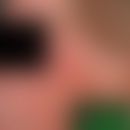Synonym(s)
DefinitionThis section has been translated automatically.
ManifestationThis section has been translated automatically.
Predisposing factors on the part of the organism are diabetes mellitus and circulatory disorders, external predisposing factors are frequent contact with water and cleaning agents.
You might also be interested in
Differential diagnosisThis section has been translated automatically.
TherapyThis section has been translated automatically.
TablesThis section has been translated automatically.
Exogenous and endogenous causes of dyschromas
Exogenous causes |
General |
Smoking |
Medical applications |
Rivanol, silver nitrate, potassium permanganate |
|
Cosmetics |
henna, mercury in bleaching ointments, ingredients of nail polishes, tanning creams |
|
Professional substances |
hairdressing materials, wood polishes, varnishes |
|
| ||
Endogenous dyschromia |
Toxins |
Lead, silver, arsenic |
Drugs |
phenothiazines, antimalarials, tetracycline, ketoconazole, gold, cytostatic drugs |
|
bacteria/fungi |
Pseudomonas aeruginosa, scopulariopsis species (green or black nail discoloration) |
|
Metabolic and cardiovascular diseases |
M. M. Wilson, M. Addison, anemia, polycythemia. |
|
LiteratureThis section has been translated automatically.
- Winckler H (1989) Dyschromia of the nails due to nail polish. Nude Dermatol 15: 127-128
Disclaimer
Please ask your physician for a reliable diagnosis. This website is only meant as a reference.





